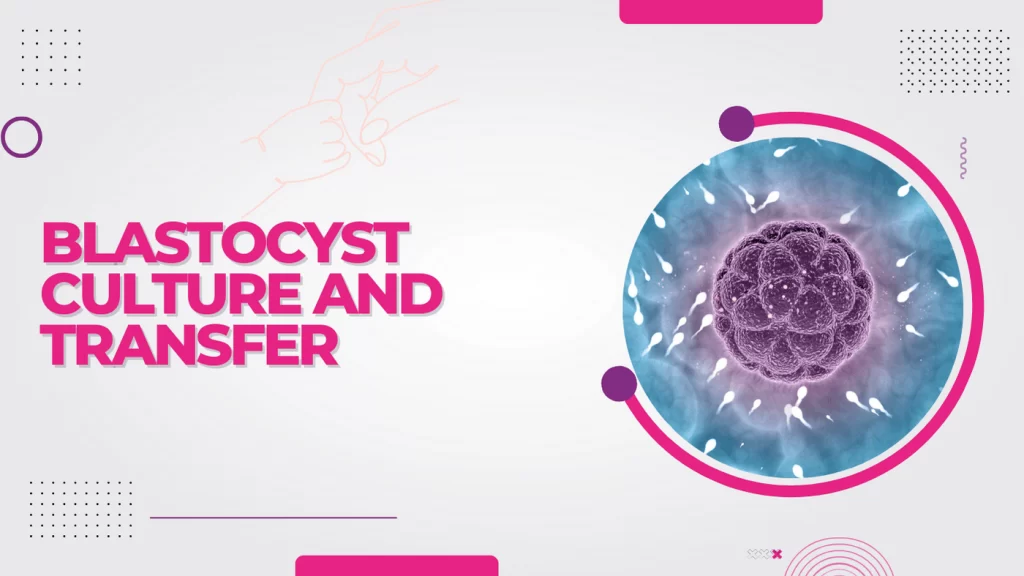
Choosing the “right embryo” is still one of the most difficult steps in the world of IVF.
A morphological approach of selecting the embryos under the microscope in the two- to eight-cell stage on day 2-3 after fertilization, has been the method of choice historically .
Studies have shown that morphologically ‘good’ embryos, with few or no anucleate fragments, are prone to having higher implantation rates than others, and seem to be a major predictor of the success of IVF treatment, However the still comparatively low implantation and pregnancy rates of IVF suggest that this approach for early selection on day 2-3 and transfer of embryos needs to be improved.
Blastocyst culture and transfer.
- An alternative method to select embryos for transfer might to extend embryo culturingupto day 5/day 6 (blastocyst culture) after fertilization.
- Patients with a high oocyte count and several embryos eligible for transfer will particularly benefit from prolonged culture to select embryos.
- Successful blastocyst culture depends on successful culture systems. In order to keep an embryo viable in prolonged culture, appropriate medium is necessary.
- This medium has to provide an environment similar to the that of the uterus which enables the embryo to develop further.
- As the embryo cell number increases, the demand for energy carriers becomes more and more differentiated.
- Due to the loss of pluripotency of the individual cells, energy consumption becomes more complex and embryo adjusts its energy consumption from pyruvate to the more complex sugar glucose in the first 2-3 days.
- This finding formed the basis for the introduction of sequential culture, in which culture medium is changed on day 3.
- The most important reason for the change of medium is the adaptation to the physiological conditions of the tubal environment as the site of early embryonic division stages compared to the uterine environment as the site of implantation.
- The initial days of embryo development are driven by the maternal genome. The embryonic genome is activated from day 3 onwards.
- The initial days of embryo development are driven by the maternal genome. The embryonic genome is activated from day 3 onwards.
- Therefore, prolonged culture permits the self-selection of embryos with greater implantation potential as well as accurate assessment.
- When many cleavage stage embryos are left in culture, only 40% will develop into blastocysts in an average lab, against 60% in an excellent lab.
- In natural conception, cleavage embryos develop in the fallopian tube, the blastocyst is the first stage of the embryo that will be exposed to the uterine environment.
- Therefore the transfer of the embryo into the uterus in the blastocyst stage provides better physiological synchronization between the embryo and the endometrium, and minimizes the risk of expulsion due to exposure to increased uterine contractility, which is present during the early days.
- The purpose of extending embryo culture to day 5/6 is to select an embryo with a greater likelihood of implantation rather than to improve embryo quality.
- Culture media failed to take into account the changing physiology and requirements of the embryo hence therefore at present blastocyst culture has become the standard in the majority of successful laboratories.
Advantages Of Blastocyst Transfer
- A better embryo selection is possible. The embryos that reach this stage have a higher chance to implant and achieve a pregnancy.
- The development of new media and better culture conditions will allow blastocyst formation upto 60% and above
- The optimization of vitrification techniques guarantees the freezing in the blastocyst stage with high success rates.
- There is a better physiological balance between the embryo and the endometrium
- Due to the selection process, blastocysts may present with a lower percentage of chromosomal alterations or aneuploidies.
- PGT can be perfomed on blastocysts in necessary cases .
Disadvantages:
-
- If the culture environment is suboptimal, delayed embryo development and even embryonic arrest MIGHT occur therefore leading to cycle cancellation.
Success rate of embryo transfer d3 v/s d5
- Implantation rate for blastocysts are as high as 60% as compared to D3/cleavage staged embryos which is around 30%
FAQs